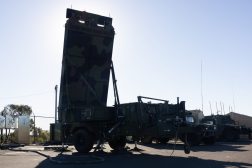Pentagon’s 5G office sponsoring Open RAN technology challenge with more than $6M in cash prizes

The U.S. government is now accepting applications for a challenge competition aimed at validating open radio access network (Open RAN) technology for U.S. military modernization.
The “2023 5G Challenge: Advanced Interoperability” initiative will be led by the Institute for Telecommunication Sciences division of the Commerce Department’s National Telecommunications and Information Administration (NTIA), and is being sponsored by the Defense Department’s FutureG and 5G Office, which falls under Pentagon Chief Technology Officer Heidi Shyu.
“The 5G Challenge will help establish the deployment readiness of Open RAN systems — an important factor in future decisions about updating communications infrastructure on Department of Defense facilities under the base modernization initiatives in the National Defense Authorization Act for Fiscal Year 2023. The military services will provide plans for such modernization this year and prepare to undertake them over the next three years at hundreds of DoD facilities,” per a DOD press release on Thursday.
The competition will “help validate Open RAN as the architecture of the future,” it added.
Applications are due by March 1. An informational webinar will be held Feb. 9.
Competitors will vie for up to $6.22 million in cash prizes. The total prize pool is worth up to $7 million including in-kind prizes.
A key aim of the two-year, four-stage effort is to accelerate the adoption of open interfaces, interoperable subsystems, secure networks, and modular, multi-vendor solutions, according to the event website.
The prize money will go to participations who “successfully showcase the best ability to integrate with other participants to establish end-to-end (E2E) sessions and demonstrate mobility.”
The initiative will accept combined central unit (CU) and distributed unit (DU), and radio unit (RU) subsystems from qualified applicants.
This year’s challenge is just the latest of many U.S. government moves to push the Defense Department to adopt next-generation communication technologies. Last year’s 5G challenge focused on demonstrating RAN subsystem interoperability.
At the direction of Congress, the DOD last year also established a cross-functional team focused on these capabilities. And the FutureG and 5G Office, which falls under the Office of the Undersecretary of Defense for Research and Engineering, has been tasked with spearheading key modernization efforts.
The Defense Department is also helping to fund an Open6G technology hub, which is part of the Pentagon’s Innovate Beyond 5G (IB5G) program, which aims to “jumpstart 6G systems research on open radio access networks (Open RAN).”
A number of other 5G pilot projects and experiments have also been launched on U.S. military bases in recent years as officials look to leverage the technology for things like augmented/virtual reality for mission planning and training, “smart warehouses” for logistics, and distributed command and control.






